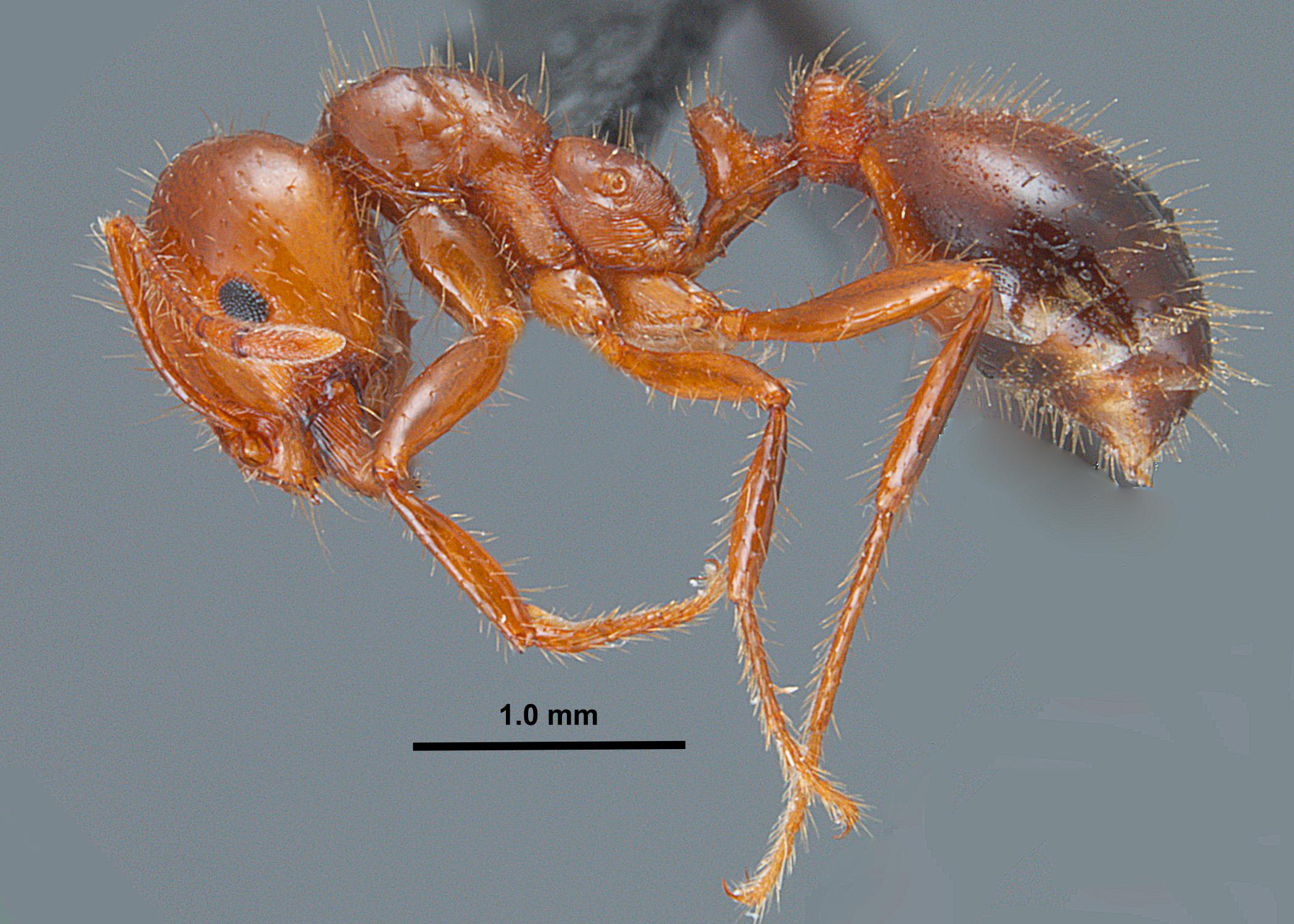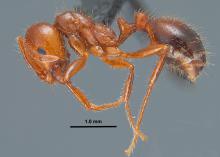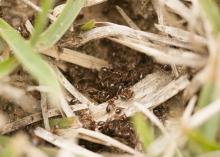Information Possibly Outdated
The information presented on this page was originally released on April 24, 2015. It may not be outdated, but please search our site for more current information. If you plan to quote or reference this information in a publication, please check with the Extension specialist or author before proceeding.
Use a two-prong attack to Bite Back at fire ants
STARKVILLE, Miss. -- Tell Mississippians that fire ants have completely invaded the state, and they’ll probably shrug and say they already know that. Tell them the pain actually comes from a sting rather than a bite, and they’ll say it still hurts. But tell them how to get rid of the nasty critters, and they’re all ears.
The Mississippi State University Extension Service is organizing efforts to help residents Bite Back against fire ants. The solution is a simple two-part attack, but success comes in the long-term follow-through.
Extension entomologist Blake Layton said the best way to fight fire ants and have the least environmental impact is to use bait and mound treatments.
“Spread bait around the area for foraging ants to gather three times a year at Easter, the Fourth of July and Labor Day, and use mound treatments as new mounds appear,” Layton said. “We have good tools for fighting fire ants, but we have to keep using them. It’s like the air conditioner at home. We can keep our house cool in the summertime, but just because we cooled it yesterday doesn’t mean we don’t have to do it again today.”
This two-pronged approach allows both immediate and long-term fire ant control. Mound treatments, often sold in powder form, are applied directly to visible nests and rapidly kill the entire colony when used properly. Foraging worker ants bring baits back to their mounds. These granules gradually spread through a colony and destroy its workers and queen.
“Baits are slow-acting, and it can take a month or more to see the effect, but they are important for lasting control. If I was limited to only one method of fire ant control, I would use baits,” Layton said. “Successful fire ant control has to be an ongoing effort.”
Layton said the fall bait treatment is very important.
“The benefit of fall bait application is you see fewer mounds in the spring,” Layton said. “Fire ants are persistent in the ground, and they eat stored food, including bait, in the winter.”
Black imported fire ants arrived in the U.S. at the Port of Mobile around 1918, and red imported fire ants arrived there in the 1930s. Some ships from South America would carry soil as ballast. When they loaded cargo for the trip home, the ship’s crew would unload the soil, along with any unwanted insects.
Fire ants came from the open grassy areas of Argentina and Brazil, so they like treeless areas, such as yards, pastures and athletic fields, in the U.S. Imported fire ants are more aggressive than native ants, allowing them to outcompete the domestic insects as they spread.
Fire ants have spread from California to the East Coast. They have ranged as far north as Maryland and Oklahoma. The invaders are pushed back by the cold and do not survive in areas where the soil consistently freezes several inches deep every winter.
“In the U.S., fire ants have few natural predators or diseases,” Layton said.
In colonies containing a single queen, the primary factor limiting their spread to other areas is other fire ants, said Joe MacGown, a research technician and scientific illustrator for the Mississippi Agricultural and Forestry Experiment Station.
“They compete with one another, and if one mound is gathering all the food resources in an area, the other mound can’t survive,” MacGown said. “Unfortunately, colonies that contain multiple queens do not exhibit this territorial competition.”
Fire ant workers vary in length from about 1 mm to 4.5 mm. They are bicolored, with reddish to reddish-brown heads and upper bodies and dark brown to black lower bodies.
“Queens can lay between 200 and 2,000 eggs per day, depending on the size of the colony, food resources and environmental conditions,” MacGown said.
A fire ant infestation is easily recognizable by numerous, distinctive dome-shaped mounds scattered across open areas. When not controlled, fire ants can significantly mar a landscape and pose a number of threats to humans, pets and wildlife.
“The number of mounds per acre is somewhat dependent on whether or not the colony has multiple queens (polygyne form) or a single queen (monogyne form),” MacGown said. “For monogyne forms, there are usually less than 300 mounds per acre given the right habitat, but with polygyne colonies, there can be more than 300 mounds per acre.”
Fire ants aggressively defend these homes.
“When mounds are disturbed, workers give off an alarm pheromone, which is picked up by the other workers and cues them to defend the colony,” MacGown said. “They quickly find the intruder and first bite, then sting the intruder, releasing a necrotizing alkaloid venom, which in people, causes pain and in some cases, severe allergic reactions.”
Find more information on the Bite Back efforts from MSU Extension Service at http://extension.msstate.edu/bite-back.




